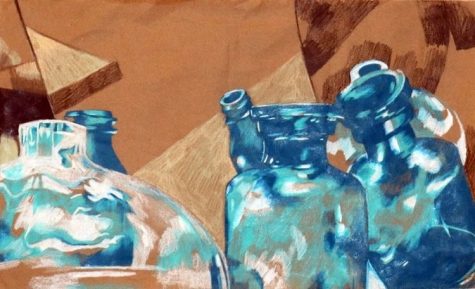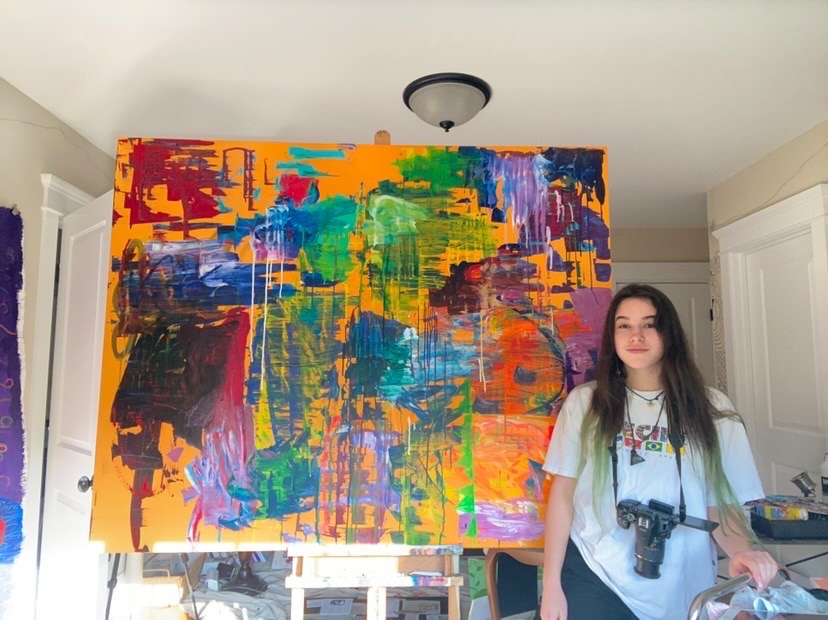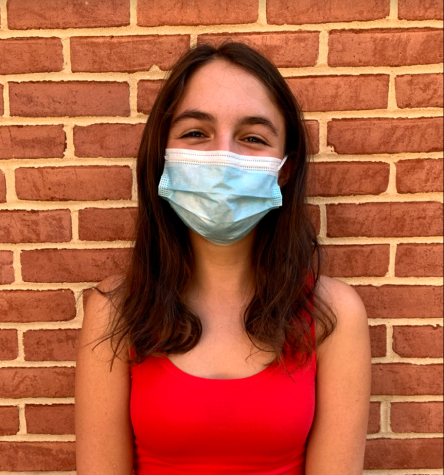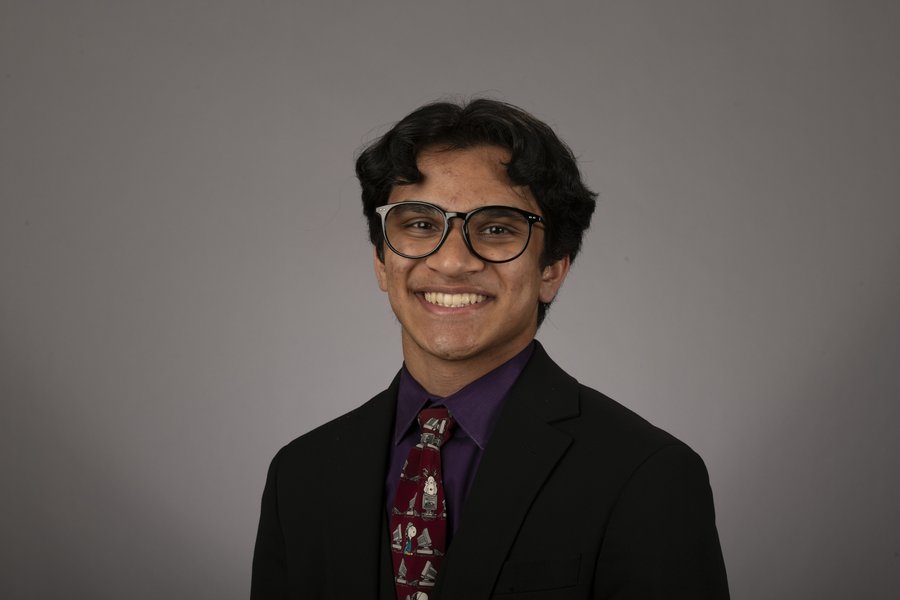Student artists search for creative spark amidst pandemic
Senior Olivia Tyler and a painting she created over the pandemeic.
January 18, 2021
After three years traversing Whitman’s art curriculum, senior Maddie Kemp thought she had seen it all. From renaissance-era themed portraits to distorted, abstract self portraits, Kemp thought she had shaded, traced and stenciled nearly everything under the sun — until she had to produce a still life drawing of glass.
Her first reaction was to panic, Kemp said. Glass just seemed too difficult a material to bring to life on the page, but as she experimented, Kemp recognized a simplicity to the substance which she had initially overlooked. The still life wound up being one of her favorites pieces.
“Art is less about what I’m making and more about the process,” Kemp said.

With the pandemic bringing in-person art classes to a screeching halt, Kemp and other senior artists now find themselves looking for inspiration from the confines of their homes. For many students, the change in setting has altered the subject of their artwork.
“My artistic process has changed because I’m not leaving my house or interacting with people which used to be where I got my inspiration,” senior Olivia Tyler said. “So I have been cultivating a new artistic process and understanding myself much more in my art.”
Tyler has begun to work on a new series of 10–12 projects titled “Company,” looking to represent the impact of isolation on mental health and spirituality. Tyler chose the name to reflect the individuality and inner peace she has begun to accept over the past several months, she said. In one of her pieces, the central figure is shown staring at her reflection while sitting on her bathroom counter.
Similarly, senior Willo Sheldon feels a lot of people’s art now is guided by their experience with coronavirus and life in quarantine, she said. Since schools closed in March, Sheldon’s artwork has increasingly focused on communicating how the pandemic has altered her life.
“My AP concentration junior year completely changed meaning over quarantine,” Sheldon said. “I think a lot of people have had their work influenced by the coronavirus, and their work means something different now.”
Kemp views the new, unique subject matter and increased time for working on artwork as a silver lining to the horrors of the pandemic. Such bursts of creativity, however, do come with occasional artist blocks.
“There’s a bigger inspiration network because people have all this free time,” Kemp said. “On the flip side, when you have all this time you can run out of creative energy really fast. So it’s a blessing and a curse.”
Besides personal strains, seniors also face an altered art college application process. Arts students tend to submit a 15 piece portfolio. Now, however, these artists receive less personalized criticism on their work, putting their education and futures at stake.
“Normally, the colleges would look at your art and give you serious critiques before you submit your portfolio,” Tyler said. “Now, it’s all virtual and you can’t get as much engagement as you would in person.”
Despite the challenges and frustrations posed by COVID-19, Tyler explained that she and other artists have recognized one underlying theme in a virtual environment: commitment.
“I think we’ve realized how important each other are,” she said. “We also realized how much we need to engage with one another.”







